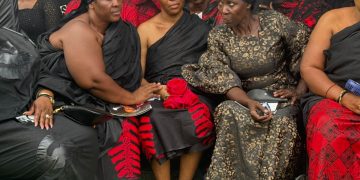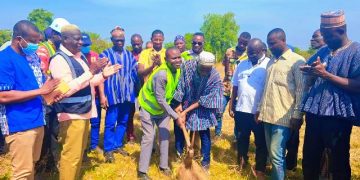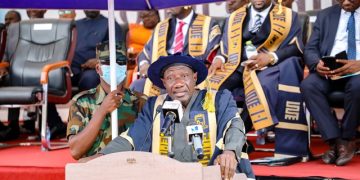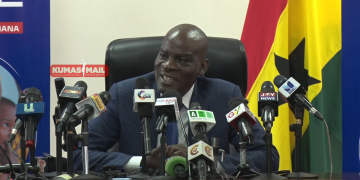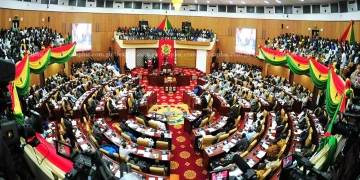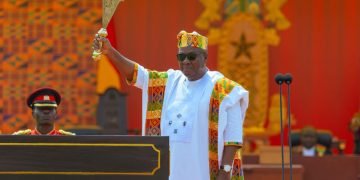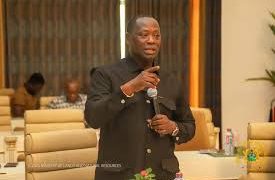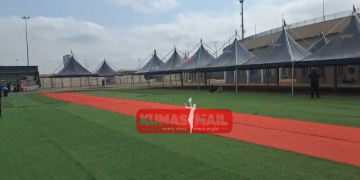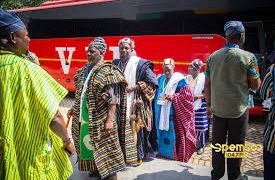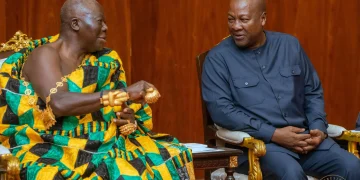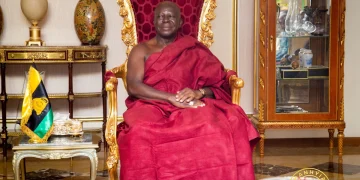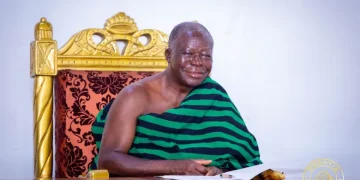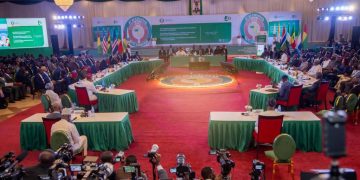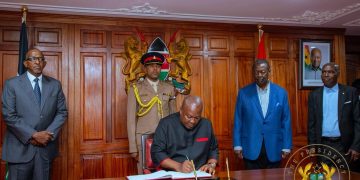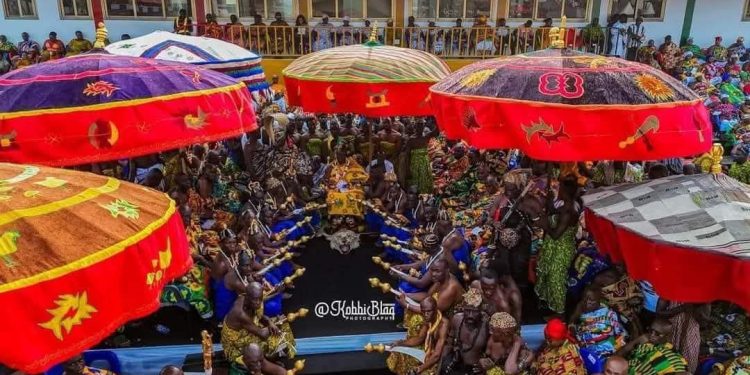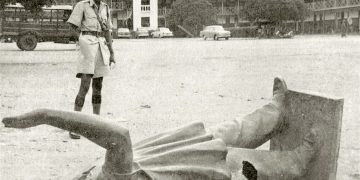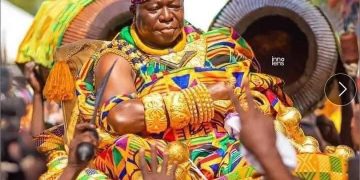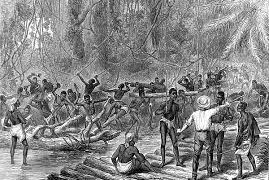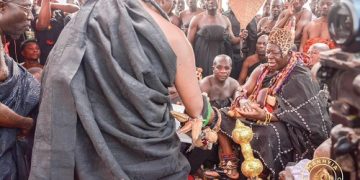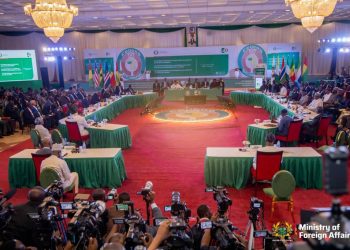Read below for better understanding Ghana Law report
REPUBLIC v. TECHIMAN TRADITIONAL COUNCIL; EX PARTE TUTU [1982-83] GLR 996-1003
COURT OF APPEAL, ACCRA
11 MAY 1982
FRANCOIS, EDWARD WIREDU AND COUSSEY JJ.A.
Chieftaincy—Proceedings affecting—Applicable law—Pre and post independence statutes—Houses of Chiefs Act, 1958 (No. 20 of 1958), s. 4 (3) providing for membership of Ashanti Regional House of Chiefs consisting of traditional councils including Kumasi Traditional Council (KTC) headed by Asantehene—Tanoso as at 1958 forming part of KTC—Subsequent creation of Brong-Ahafo Regional House of Chiefs in 1959, consisting of Amanhene excluding Tanoso — Enactment of Act 81 creating a joint Tano-Subin Traditional Council excluding Tanoso and providing that all state councils in existence to be converted into traditional councils—Effect of NLCD 112 and Act 370 regarding the status of Tanoso—Whether Tanoso under KTC and not Techiman Traditional Council—Houses of Chiefs Act, 1958 (No. 20 of 1958), s. 4 (3)—Brong-Ahafo Region Act, 1959 (No. 18 of 1959)—Chieftaincy Act 1961 (Act 81), ss. 11, 12 and 15—Chieftaincy (Amendment) Decree, 1966 (NLCD 112)—Constitution, 1969—Chieftaincy Act, 1971 (Act 370).
[p.997]
Chieftaincy—Traditional council—Membership—Determination of—By reference to statute creating it—Evidence of cancellation of Local Government Bulletin conferring membership of Tanoso in Techiman Traditional Council—Effect—Legislation since 1958 placing Tanoso under Kumasi Traditional Council and not Techiman Traditional Council.
HEADNOTES
The respondents, the Kingmakers of Tanoso, brought destoolment charges against the appellant, the queenmother of Tanoso, before the judicial committee of the Techiman Traditional Council (TTC). She raised an objection founded on want of jurisdiction of the TTC to hear the case because Tanoso did not form part of the TTC but rather the Kumasi Traditional Council (KTC). Her objection was, however, overruled and the TTC, after hearing the case, gave judgment against her – finding her guilty of all the charges levelled against her. The appellant therefore applied for an order of certiorari to quash the judgment but her application was dismissed by the High Court, Sunyani. In affirming the decision that Tanoso was within the TTC, the High Court, in its ruling, held that in the light of the conflicting Local Government Bulletins for 1977 and 1979 which had placed Tanoso under the TTC and the KTC respectively, its status as to which traditional council it belonged, could be determined by “the traditionally established conduct of the people themselves.” In the instant appeal against the ruling,
Held, allowing the appeal: (1) chieftaincy since the British colonial administration had been governed by statute and that had continued since the independence of Ghana in 1957. In 1958 the legislation which governed chieftaincy was the Houses of Chiefs Act, 1958 (No. 20 of 1958). Section 4 (3) of that Act had the Asantehene and the occupants of the stools mentioned in the third schedule to the Act as members of the Ashanti Regional House of Chiefs. There were state councils then within the regions. The Asantehene was also Kumasihene, and as such the head of the Kumasi State Council. And the evidence was that as at 1958, Tanoso formed part of the Kumasi State Council. Therefore Tanoso was under the Asantehene as Kumasihene. When the Brong-Ahafo Region was created by the Brong-Ahafo Region Act, 1959 (No. 18 of 1959), the Amanhene in the newly created region were made to have their own house of chiefs. It was noteworthy that Tanosohene, not being an Omanhene, was not included. For, after the creation of that separate region from Ashanti, the next Act passed to govern chieftaincy was the Chieftaincy Act, 1961 (Act 81), the purpose of which was to bring together in one Act all the existing enactments relating to chieftaincy which were scattered in legislative and executive instruments. There were a number of changes in Act 81, e.g. the terms “state” and “state council” were replaced by the terms “traditional area” and “traditional council” respectively. Thus Act 81 created the joint Tano-Subin Traditional Council which excluded Tanoso even though Tanoso was in the Tano-Subin Area. And Act 81, s. 12 provided that a state council in existence at the commencement of the Act was to be converted into a traditional council where the state council substantially corresponded to the traditional area and in the case of the Kumasi Traditional Area by section 11 of Act 81, the Asantehene exercised jurisdiction in chieftaincy matters conferred by section 15 of Act 81. The subsequent enactment, i.e. the Chieftaincy (Amendment) Decree, 1966 (NLCD 112), which was to be construed with the provisions of Act 81, made certain changes in relation to the status of certain chiefs in Ghana but did not affect Tanoso. Under NLCD 112, the Tano-Subin Traditional Council reverted to the Kumasi Traditional Council. [p.998] After the Constitution, 1969, the Chieftaincy Act, 1971 (Act 370), was passed to amend the statute law on chieftaincy and to bring it in conformity with the provisions of the Constitution, 1969, and to make other provisions relating to chieftaincy. Traditional councils in existence before the passing of Act 370 were made to continue. The position of Tanoso as coming under the Kumasi Traditional council was not affected by the Act, and there had not been any legislation which had taken Tanoso from the jurisdiction of the Kumasi Traditional Council since then. The High Court had therefore erred in holding that Tanoso was within the Techiman Traditional Council and that its status could be determined by “the traditionally established conduct of the people themselves.”
Per Coussey J.A. Traditional councils are a creation of statute law; and whether a particular town or village with its chief belongs to or not to a traditional council is a matter which can be ascertained from the statute creating the particular traditional council. It is a matter of evidence that the 1979 Local Government Bulletin, exhibit X, on Tanoso, cancelled the one issued in 1977 and therefore on the face of exhibit X, Tanoso was within the Kumasi Traditional Council as late as 1979… It would appear that since 1958, all the pieces of legislation passed regarding the position of Tanoso, be it under a state council or a traditional council, have placed Tanoso under Kumasi and never under Techiman.
CASE REFERRED TO
Sam v. Buadom (1922) F.C. `22, 24.
NATURE OF PROCEEDINGS
APPEAL from a ruling of the High Court, Sunyani, refusing an application for a writ of certiorari to quash the decision of the Techiman Traditional Council for want of jurisdiction. The facts are sufficiently stated in the judgment of Coussey J.A.
COUNSEL
Tortoe for the appellant.
No appearance for or on behalf of the respondents.
JUDGMENT OF COUSSEY J.A.
This is an appeal from the ruling of the High Court, Sunyani. The main ground argued by the appellant was that “on the affidavits filed by the parties it is clear that Tanoso is not within the Techiman Traditional Council and the High Court erred in holding the contrary.”
It is the law that where there is no jurisdiction proceedings are void: see Sarn v. Buadom (1922) F.C. `22, 24. The facts in this matter are simple. The respondents brought an action against the appellant who is the queenmother of Tanoso before the Techiman Traditional Council. The competency of the forum to try her was raised, but it was overruled and the said Techiman Traditional Council went into the matter and gave judgment to the effect that the appellant was guilty of all the charges preferred against her, and ordered that she should surrender her stool and the stool paraphernalia to her kingmakers.
[p.999]
The appellant moved the High Court, Sunyani, for an order of certiorari to quash the proceedings including the judgment and order in the case. The evidence before the High Court was mainly by affidavits supported by certain documents annexed to them. The appellant in a further affidavit filed in the High Court on 25 April 1979 and marked C deposed, inter alia, as follows:
“2. (a) That Tanoso became part of what is now Kumasi Traditional Area after the conquest of Techiman by Asantehene Opoku Ware I. The latter took Tanoso from Techiman after that war.
(b) That Tanoso continued to be part of the then Kumasi State Council until 1836 when the then Ashanti Confederation was broken up.
(c) That for a brief period from 1896-1934 Tanoso was given back to Techiman by the British.
(d) That when the Ashanti Confederacy was restored in 1935 Tanoso again was restored to Kumasi and became part of the then Kumasi State Council.”
This affidavit was in answer to an affidavit filed also on 25 April 1979 by Nana Kwabena Owusu, the Krontihene of Tanoso, who deposed with the consent and authority of the other respondents. The said affidavit is marked B. In the affidavit he deposed in paragraph 2, “that Tanoso is within the Techiman Traditional Council and that the judicial committee of the said council is competent to hear the petition.”
The matter, therefore, in contention is whether or not Tanoso is within the Techiman Traditional Council. On this, both the appellant and the respondents tendered exhibits D, Z and X before the High Court in support of their case. Exhibit D relates to the destoolment and enstoolment of a Tanosohene in 1958. It is evident on the face of exhibit D that Tanoso was part of the Kumasi State Council. Exhibit Z, the Local Government Bulletin, which was tendered by the respondents did place Tanoso under the Techiman Traditional Council in 1977; but this Local Government Bulletin was cancelled by exhibit X published in 1979 which placed Tanoso under the Kumasi Traditional Council.
Chieftaincy, since the British colonial administration has been governed by statute and this has continued since the independence of Ghana in 1957. In 1958, the legislation which governed chieftaincy was the House of Chiefs Act, 1958 (No. 20 of 1958). Section 4 (3) of that Act had the Asantehene and the occupant of the stools mentioned in the third schedule to the Act as members of the Ashanti Region House of Chiefs. There were state councils then within the regions.
[p.1000]
The Asantehene was also Kumasihene, and as such the head of the Kumasi State Council. Tanoso by exhibit D was within the Kumasi State Council in 1958. Therefore, Tanoso was under the Asantehene as Kumasihene. When the Brong-Ahafo Region was created by the Brong-Ahafo Region Act, 1959 (No. 18 of 1959) the Amanhene in the newly created region were made to have their own house of chiefs. It is to be noted that Tanosohene, not being an Omanhene, was not included. For, after the creation of this separate region from Ashanti, the next Act passed to govern chieftaincy was the Chieftaincy Act, 1961 (Act 81).
The purpose of the Act was to bring together in one Act all the existing enactments relating to chieftaincy which were scattered in legislative and executive instruments. There were a number of changes in the Act and the Act also effected a number of improvements both in form and content in the provisions of its enactments. For instance it was considered that the terms “state” and “state council” were misleading since there were no states in the country in the modern sense of the word. Accordingly, these terms were abandoned and replaced by the term “traditional area” and “traditional council.”
Act 81, created the joint Tano-Subin Traditional Council made up of the joint Amanhene of Nchiraa, Tuobodom and Offuman. Tanoso is in the Tano-Subin area, but it was excluded. Section 12 of Act 81 provided that a state council in existence at the commencement of Act 81 was to be converted into a traditional council where the state council substantially corresponded to the traditional area; and in the case of the Kumasi Traditional Area by section 11 of Act 81, the Asantehene exercised jurisdiction in chieftaincy matters conferred by section 15 of Act 81.
The Chieftaincy (Amendment) Decree, 1966 (NLCD 112), which was to be construed with Act 81 made certain changes in relation to the status of certain chiefs in Ghana, but did not affect Tanoso. In fact, by NLCD 112, the other townships in the area forming the Tano-Subin Traditional Area reverted to the Kumasi Traditional Council. After the Constitution, 1969, a Chieftaincy Act was passed in 1971, i.e. the Chieftaincy Act, 1971 (Act 370). It was an Act to amend the statute law on chieftaincy and to bring it in conformity with the provisions of the Constitution, 1969, and to make other provisions relating to chieftaincy. Traditional councils in existence before the passing of Act 370 were made to continue. The position of Tanoso as coming under the Kumasi Traditional Council was not affected by the Act, and there has not been any legislation which has taken Tanoso from the jurisdiction of the Kumasi Traditional Council since then.
The learned judge, faced with conflicting Local Government Bulletin on Tanoso issued in 1977 and 1979 which are exhibits Z and X respectively, expressed his opinion on them as follows:
[p.1001]
“There being conflicting publications as to the position of Tanoso, it is obvious that other sources must be found for the determination of the issue. We can only resort to the traditionally established conduct of the people themselves.”
With all due respect to the learned judge in the court below, I think he erred in resolving the issue on what he termed ” the traditionally established conduct of the people themselves.”
Traditional councils are a creation of statute law; and whether a particular town or village with its chief belongs to or not to a traditional council is a matter which can be ascertained from the statute creating the particular traditional council. It is a matter of evidence that the 1979 Local Government Bulletin, exhibit X, on Tanoso cancelled the one issued in 1977 and, therefore, on the face of exhibit X, Tanoso is within the Kumasi Traditional Council as late as 1979. Section 23 of Act 370, which deals with original and appellate jurisdiction of regional houses of chiefs which the learned judge referred to, does not affect Tanoso.
Tanoso is not a paramountcy for the Brong-Ahafo Regional House of Chiefs to have original jurisdiction in its chieftaincy affairs. It would appear that since 1958, all the pieces of legislation passed regarding the position of Tanoso, be it under a state council or a traditional council, have placed Tanoso under Kumasi and never under Techiman.
Counsel for the respondents filed a supplementary reply to arguments made by counsel for the appellant on 5 May 1982. This was at the court’s instance. The purpose was to enable him to see if he could find by diligent research any piece of legislation which would indicate that Tanoso is within the Techiman Traditional Council. The submissions filed and placed before us for our consideration are that under section 3 (1) of the Native Authority (Ashanti) Ordinance, Cap. 79 (1936 Rev.), of the Laws of the Gold Coast, the Governor of the Gold Coast was empowered to make an order declaring that there shall be a native authority for any specified area. The then Governor of the Gold Coast accordingly made the Native Authority Confederacy Order (No. 2 of 1935).
Then counsel went on to state that in fact the 1934-35 Gold Coast Chiefs list at page 167 under sub-division 47 has Tanoso being subservient to the Kronti stool of Techiman, and that this position of Tanoso has not changed, and therefore, Tanoso is still under the Techiman Traditional Council. I think counsel for the respondents had in mind the Native Authority (Ashanti) Ordinance (No. 1 of 1935), and not the Native Courts Ordinance (No. 2 of 1935). I think the two Ordinances should be read together. It would be observed that the Ordinances provide the machinery necessary for the objects they had in view. The objectives were clearly stated in the Native Authority Ordinance No. 1, clause 3 and the Native Courts Ordinance No. 2, [p.1002] clauses 3, 4, 7 and 9. It was the intention at the time of the restoration of the Ashanti Confederacy to establish the Asantehene’s Court and the Asantehene as a native authority under the two Ordinances referred to.
There was no enactment which has been referred to, or which I know of which established Tanoso as being under Techiman as a native authority. Techiman during the period was a division under the Western Province of Ashanti and within the Native Authority of Ashanti.
The chiefs list referred to by the respondent’s counsel was revised to 31 December 1934. Techiman was then in the Western Province of Ashanti and under the Wenchi Kintampo District. At page 167 of the chiefs list, it is true that the odikro of Tanoso, Kwamin Boafo, enstooled in 1932, was under the Kronti sub-division of the Techiman Division. It would also be noted in the same chiefs list at page 160 that Odikro Yaw Keabena of Tanoso, enstooled in 1918 was under the Bechem sub-division of the Berekum Division. It would be noted at page 113 that Nana Osei Agyeman Prempeh II, enstooled in 1931 was then only Kumasihene and not Asantehene. The title was restored in 1935.
The reason for the inter-changing position of Tanoso can be traced to the history of the particular period in question. In the appellant’s affidavit marked C, para. 2 (c), she averred that for a brief period from 1896-1934, Tanoso was given back to Techiman by the British, and in paragraph 2 (d) she stated that when the Ashanti Confederacy was restored in 1935 Tanoso again was restored to Kumasi and became part of the Kumasi State Council. These depositions were not challenged by the respondents. It will be noted that between 1896-1934 there was no Asantehene. Prempeh I had been deported to the Seychelles and when Prempeh II was enstooled in 1931 he was only Kumasihene. The dismembering of the Ashanti Kingdom resulted in the British administration forcing several towns and villages in Ashanti to serve stools with which they had had no links. It is, therefore, not surprising that Tanoso served Berekum in 1918 and later Techiman.
The restoration of the Ashanti Confederacy in 1935 was a restoration of the pre-1874 status of chiefs. Techiman with Tanoso as its village was conquered by the Ashantehene Opoku Ware I in 1740 and therefore came under Ashanti. This is a historical fact and cannot be distorted. So far as Tanoso is concerned it has remained under Kumasi since 1935. There is no significance to the list attached showing the composition of the Techiman Traditional Council at present. It emanates from the Brong-Ahafo Regional House of Chiefs which is not vested with authority to create such a council. The later submissions filed have not enhanced the respondents’ case. They are rejected.
[p.1003]
It is upon these reasons that I would reverse the ruling of the High Court and make an order that certiorari lies to quash the proceedings of the Techiman Traditional Council in respect of the status of the respondent as queenmother of Tanoso. The proper forum to hear her destoolment charges will be the Kumasi Traditional Council.
JUDGMENT OF FRANCOIS J.A.
I agree that the appeal should be allowed.
JUDGMENT OF WIREDU J.A.
I also agree.
DECISION
Appeal allowed.
Application for certiorari granted.
J. A. A.
Source : www.kumasimail.com /Legal Library Services




